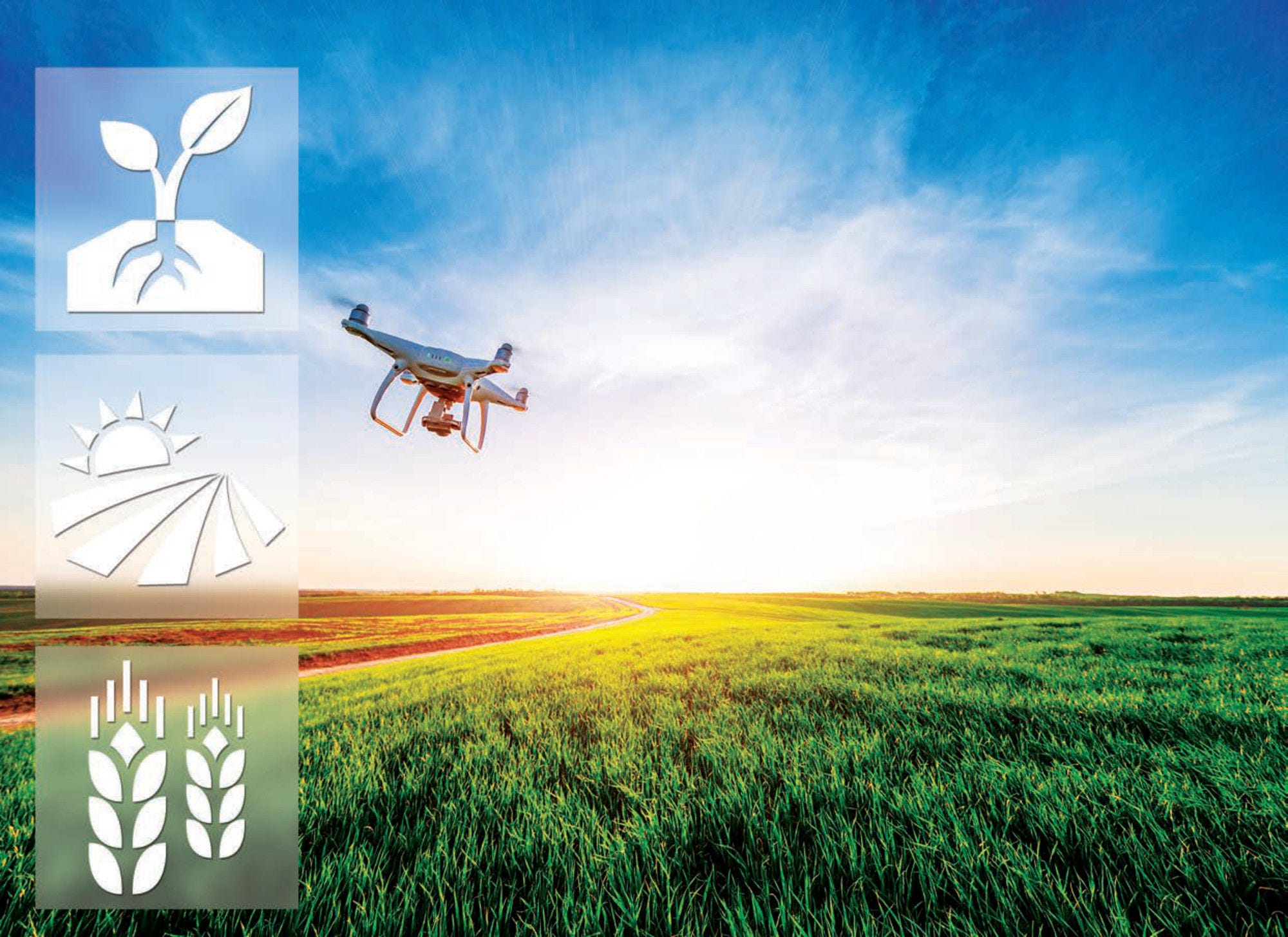The Chinese economy is experiencing a number of structural changes that also have a deep impact on the food and agricultural sector. The working age population started to decline in 2015 and the overall population is projected to peak in 2030. The population is expected to age rapidly over the coming decades. Rapidly increasing real wages since the early 2000s required the People’s Republic of China (hereafter “China”) to transform its growth model from one that relied on an ample supply of low wage labour from rural areas. The challenge is to shift from growth based on the mobilisation of labour and capital resources to growth based on enhancing productivity through innovation and sustainable use of natural resources, including in the food and agricultural sector.
Driven by self-sufficiency objectives for major grains, China achieved a remarkable expansion of agricultural production, but at the expense of the sustainable use of natural resources. Agriculture is the biggest user of land and water resources, and intensive use of chemical inputs has led to soil degradation, water pollution, and damaged bio-diversity. Water resources reached the limit of sustainable use, particularly in areas where irrigation is intensive or water resources are scarce. The development of the intensive livestock sector has created serious environmental stress, especially on water quality. Climate change is expected to affect agricultural production through rising temperatures, the spread of pests and disease, and more frequent and more severe droughts and floods. Growing competition from other users of land and water may also affect the future of the sector.
While China has succeeded in reducing the incidence of poverty in rural areas, rapid industrialisation has led to large income disparities between urban and rural households. In China, agriculture still accounts for close to 30% of employment, but generates less than 10% of GDP, indicating that labour productivity is significantly lower than in the rest of the economy. The total number of persons employed in agriculture is declining only slowly, and the labour productivity gap between agriculture and other industries is increasing. Because of their importance in many social and economic aspects of China’s development, agriculture, farmers and rural areas (three nong) have been selected, since 2004, as the topics of the annual No.1 Document that determines annual policy priorities.
Dietary changes associated with income growth have been a major driver for the shift of domestic agricultural production towards livestock, and fruits and vegetables. These sectors already dominate the agriculture sector in terms of production value. Due to the limited endowment of land and other natural resources, China does not have a comparative advantage in land-intensive grain production. Policies to promote grain production are hampering the structural change towards more value-added production. Future growth opportunities of agriculture in China lie primarily in agricultural products that are intensive in capital and knowledge.
The rising cost of labour and the rapid aging of the rural population require agricultural production to concentrate on a smaller number of more productive farms. Consolidating very small and highly fragmented farm operations into larger-scale units is one of the most important pathways of productivity growth in China. It would also improve sustainability of agriculture: the small and fragmented farm structure is leading to an inefficient use of chemical inputs due to the insufficient knowledge of input use among small farmers. Small farmers tend to engage in off-farm employment and have an incentive to substitute labour with chemical inputs in order to allocate more time to off-farm activities. Although small family farms still largely dominate the sector, “new-style” farms, such as large family farms, co-operative farms, and farms run by agribusiness companies are of increasing importance. High labour costs also stimulate increrased farm mechanisation, which allows farmers to save labour input and expand farm size or engage in off-farm activities
Over the last few decades, China’s agricultural policy objectives have been diversified from increasing food production to increasing farmers’ income, ensuring food safety, and improving competitiveness and environmental performance. Past agricultural policies were largely targeted to achieve near self-sufficiency of major grains, but China recently shifted its food security strategy to ensure food production with available domestic resources, importing moderately and making use of science and technology. Following this new policy direction, the domestic price support programme for cotton, soybean and corn was converted to direct payments. This is an important step towards decoupling producer support from commodity production and allowing farmers to better respond to market demand.
Institutional reform in the late 1970s to allocate land contract rights to family farms contributed to productivity growth in agriculture. China has taken steps to secure land contract rights and to allow the transaction of land operational rights. Faced with a fragmented land structure and small farming units, China introduced a number of innovative formats of farm consolidation. For example, the development of private farm machine services allows small-scale producers to outsource major faming tasks and consolidate farm operation. Voluntary co-operatives consolidate the land operational rights and facilitate vertical integration of small-scale producers with upstream and downstream industries. However, China can further strengthen the long-term stability of land contracts and operational rights to provide incentives to commit long-term investments, and to promote the entry of diverse types of entities to agriculture, which can bring fresh capital from outside agriculture. A proper registration system of operational rights also allows the government to target payment programmes to the cultivator.
China’s household registration (hukou) system restricts access to social security and education systems in urban areas for households registered in rural areas, despite the introduction of a single national resident registration system in 2014. While China is improving medical insurance, pension and public education for rural residents, an unequal access to social security systems still remains between urban and rural residents. Ensuring more equal access to social services would facilitate the migration of rural residents to urban areas and allow aged farmers to transfer farm resources to efficient and productive farmers. This would reduce the existing large income disparity between urban and rural populations and improve productivity in agriculture.
Improving the environmental performance of agriculture has become a major objective of agricultural policy in China. In 2015, China announced the Zero-Growth Action Plan for Chemical Fertilizers and Pesticides, which is designed to realize zero growth of the usage of fertiliser and pesticide by 2020. In addition to strengthening environmental regulations, China introduced an incentive mechanism for adopting more environmentally friendly practices and restoring and protecting the environment. However, in order to establish a solid framework of agri-environmental policies, China should further clarify the reference level of environmental quality as well as environmental targets, which are well adapted to local ecological conditions. China should also strengthen the enforcement of environmental regulations at the farm level. The coherence between existing agricultural policies and agri-environmental policy objectives can be improved.
China has been increasing public expenditure to enhance innovation and productivity growth; for example, through public investment in research and development (R&D) and infrastructure, but the share of such expenditure is still much less than the OECD average. In China, the cost of public stockholding has the largest expenditure share in its general service support, accounting for more than one-third in recent years. The portfolio of agricultural support should be rebalanced to reflect the policy emphasis on long-term productivity growth and sustainability.
China accelerated public investment in agricultural R&D in the 2000s, making it the world’s largest investor in public agricultural R&D in money terms. However, the intensity of public agricultural R&D, measured as R&D expenditure relative to value-added of the sector, is still lower than in most OECD countries. The output from agricultural R&D systems has improved significantly, but there is scope to improve the productivity of agricultural R&D systems. China’s global share in agri-food patents, publications and citations remains far below those in the United States and the European Union. Increasing co-ordination of research institutions and strengthening evaluation mechanisms would improve the efficiency of public funding to agricultural R&D. Moreover, in contrast to large public investment in agricultural R&D, private agricultural R&D expenditure is estimated to account for only 10-20% of overall agricultural R&D. Nearly three-quarters of R&D expenditure of public agriculture R&D institutions is directed to experimental development, in which the private sector can play a greater role. The dominance of public R&D and extension services is likely to be crowding out private agricultural R&D investment and the emergence of more diverse private farm technical services in China. Improving the enforcement of Intellectual Property Right (IPR) protection would enhance private R&D investment in agriculture, also from abroad.
Policy recommendations cover the following five key areas:
1. Enhancing incentives for private investment in agriculture
a. Strengthen the enforcement of intellectual property rights by raising awareness of laws and increasing penalties for infringements and systematically prosecuting violators.
b. Reduce barriers to entry and investment into services related to food and agriculture sector to enhance value addition.
c. Improve accessibility of financial services, in particular for the emerging types of large-scale farms operators, through promoting new entrants to rural finance.
2. Improve the framework conditions for structural change and innovation at the farm level
a. Secure long-term stability of contracts and operational rights of land by: increasing the duration of contracts and operational rights, with contracts automatically renewable upon expiration; establishing a registration system of operational rights at the local level; providing certificates detailing land rights.
b. Reduce the cost of transferring land operational rights through implementing a registration system at the local level which provides certificates detailing operational rights.
c. Promote the consolidation of farm operations through diverse organisational formats such as land shareholding co-operatives and farm machine service providers, adapted to local conditions.
d. Scale down the subsidy to purchase farm machinery, while increasing the role of rural credit institutions in financing farm capital investment.
e. Focus public investment more on land readjustment and farm access roads to promote efficient use of farm machinery.
f. Ensure more equal access to social and education service in urban areas to facilitate the migration of rural residents to urban areas.
g. Increase vocational training opportunities and develop the broad skill sets needed to adapt and innovate in the agriculture sector; facilitate life-long learning and upgrading of skills in agriculture.
3. Improving the environmental performance of agriculture
a. Review existing agricultural policy to improve their coherence with agri-environmental policy objectives including the removal of all the implicit support to fertiliser and chemicals.
b. Establish a framework of agri-environmental policies clarifying the reference level for environmental quality as well as environmental targets.
c. Strengthen the enforcement of environmental regulations through strengthening monitoring and liability management as well as complementary measures such as making payments conditional on the recipient’s compliance with environmental standards adapted to local conditions.
d. Conduct a comprehensive review of water governance to better define responsibilities, remove conflicts and ensure effective and efficient policy implementation. Implement the proposed 2016 water price mechanism. Enforce the three red-line policies on water resource efficiency, conservation and water quality with enhanced monitoring and evaluation. Prioritise policy efforts to agricultural regions concentrating the most water risks.
4. Rebalancing agricultural policy toward long-term productivity growth and sustainability
a. Further rebalance the portfolio of agricultural support from support to grain production and public stockholding to public investment in R&D and infrastructure oriented towards long-term productivity growth and sustainability.
b. Further decouple the existing commodity-specific support from production to enhance reallocation of resources based on market demand and to allow producers to set aside farmland, while maintaining production capacity.
c. Following the reform to reduce or cap the minimum purchase prices for rice and wheat, consider in the future replacing domestic price support policy with direct payments for rice and wheat, making domestic prices close to international prices.
d. Evaluate the performance of the subsidy to the agricultural insurance premium.
5. Strengthening China’s agricultural innovation system
a. Focus public agricultural R&D on areas of public interest such as environment and resource conservation and on areas where the private sector would under-invest.
b. Strengthen the role of the private sector in agricultural R&D through more effective enforcement of IPR protection, more transparent biosafety regulation, lower barriers to FDI in agricultural R&D and privatising the public R&D institutions in commercially viable areas of research.
c. Improve co-ordination between government agencies and public research institutes at national and subnational levels to avoid duplication, and increase the linkage between public research institutions, higher education institutions, agri-food enterprises, and public and private extension services to reflect industries' changing demands to public agricultural R&D activities.
d. Concentrate the role of the public extension system to the services which private organisations have less incentive to provide, such as promoting sustainable production practices.














